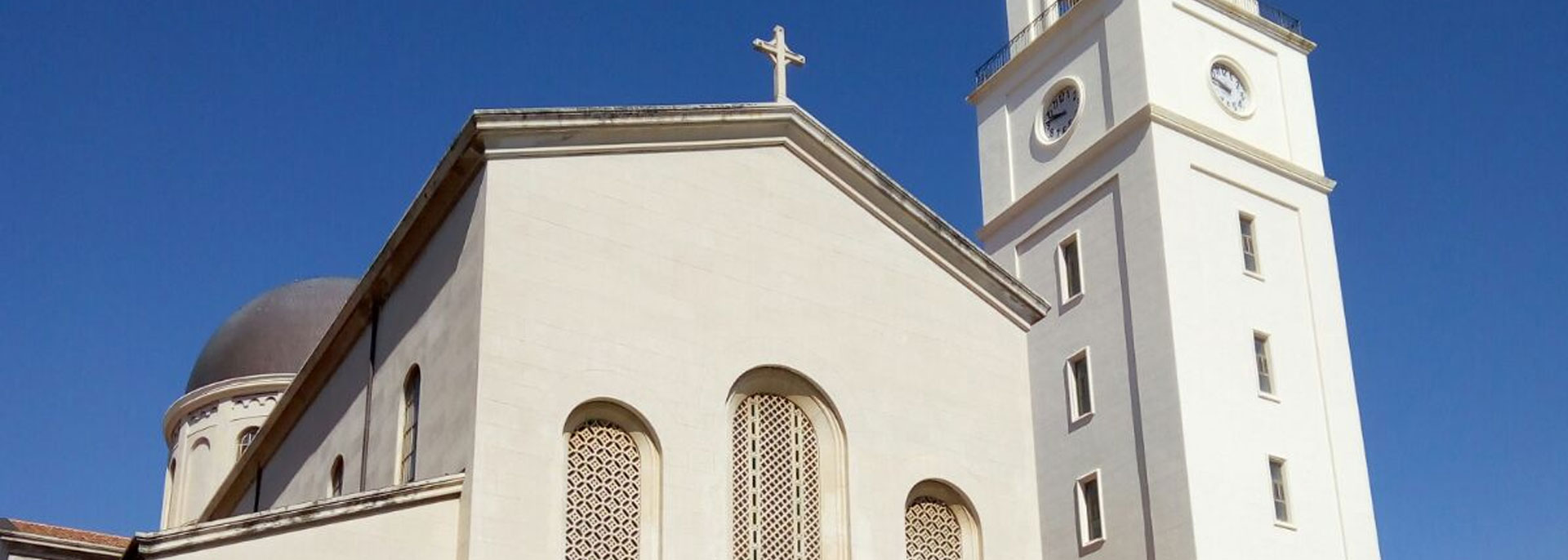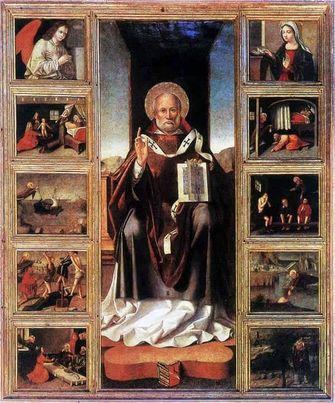Author: Antonio Giuffrè
Dating: Late 15th century - early 16th century
Place: Milazzo, Cathedral of Santo Stefano Protomartire
A mature work by Antonio Giuffrè, a relative of Antonello da Messina, this panel depicting St. Nicholas and stories from his life, in the New Cathedral, is similar in style to the Madonna and Child, St. Peter and St. James in the Messina Museum, attributed to him by Bottari (1951). The St. Nicholas documents a lost work by Antonello, but described by Di Marzo and illustrated by Cavalcaselle, who saw it in the Messina church of the Jesuits, before the 1908 earthquake destroyed it. The figure of the Angel, which acts as a pendant to the Annunciation (absent in Antonello's original), has the same typology as the other of the Annunciation in the same Milazzo Cathedral, attributed by Bottari to Giuffrè. The stories of the saint's life, with their lively naturalism, can be inserted into that Mediterranean and international culture, between Naples, Provence, Flanders and Catalonia, which had already given pictorial equivalents in the S. Antonio Abate with his Colantonio stories in the S. Pietro Martire in Naples. The perspective play of the floor, the habit and the minute decoration with the Annunciation, are elements peculiar to Antonello's composition (especially the former), which the copyist does not take up, we cannot say whether through will, inexperience or otherwise. The same chair painted by Marchese is much simplified compared to the original, moreover instead of a floor here we find a poly-lobed step (Natoli, 1981) and the gold background is replaced by a slender landscape. Finally, the general proportions of the work and the dimensions of the individual parts are different but, above all, two new panels are added to the composition at the top, with the Announcing Angel on the left and the Madonna on the right, so that in the copy we find ten small paintings rather than eight. The typical bearded and compact face of Nicholas, the posture with the arched hand and the open book with the two sheets at right angles are not missing, however.








